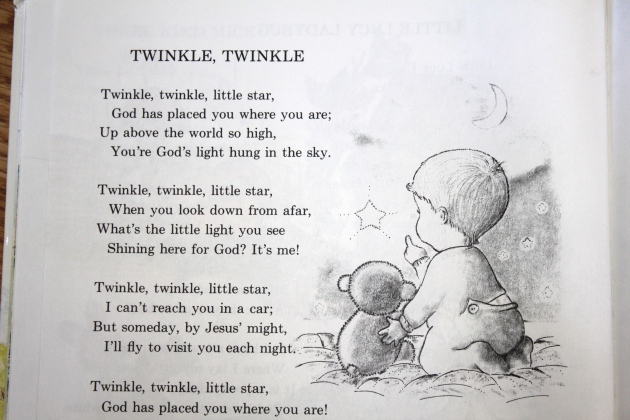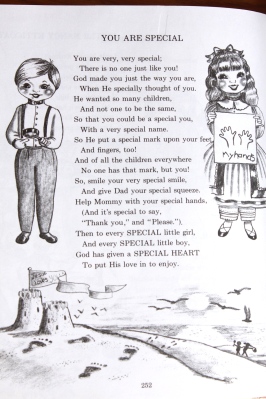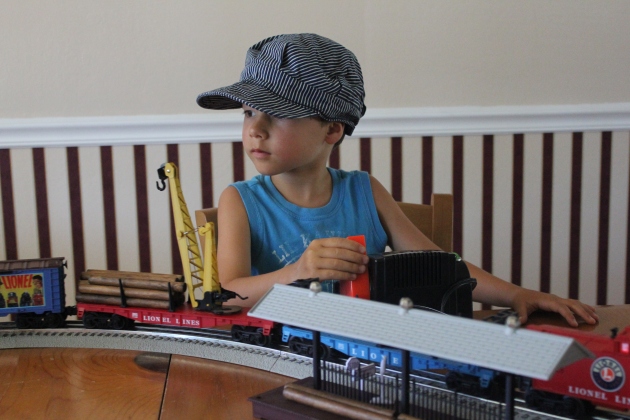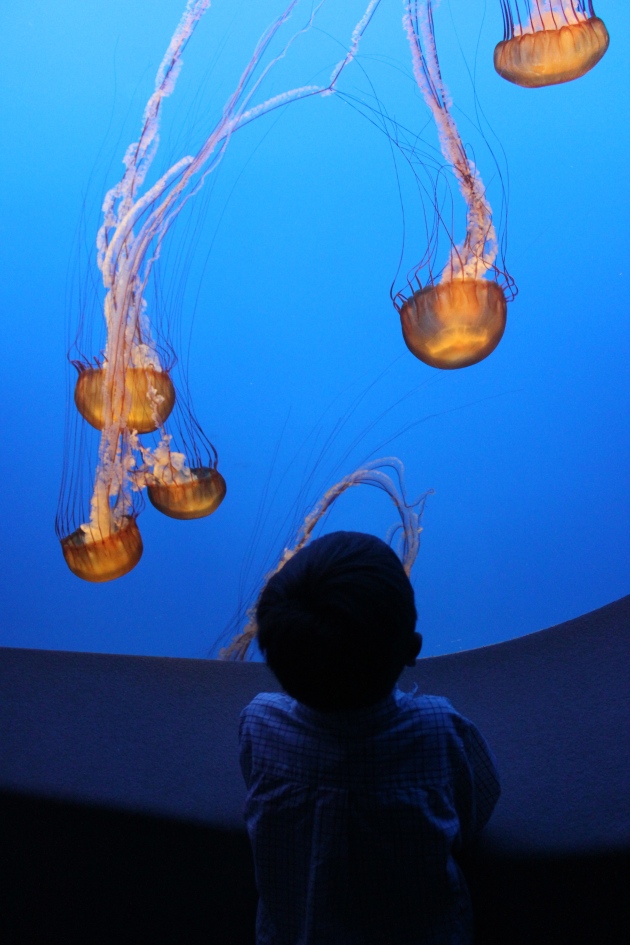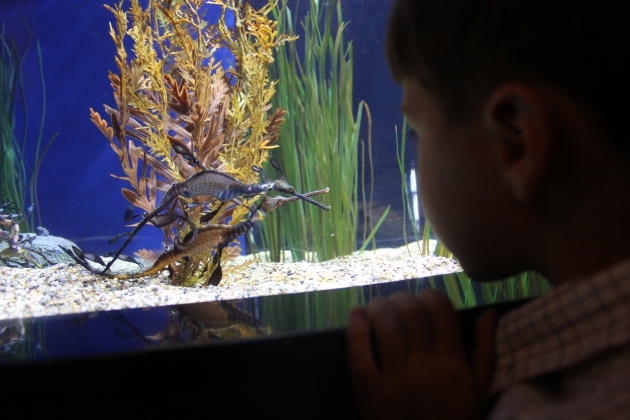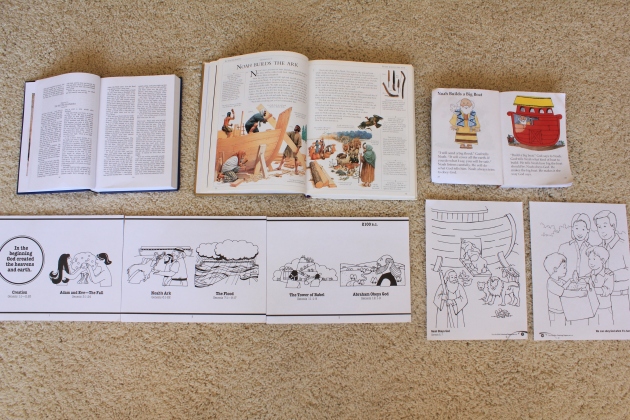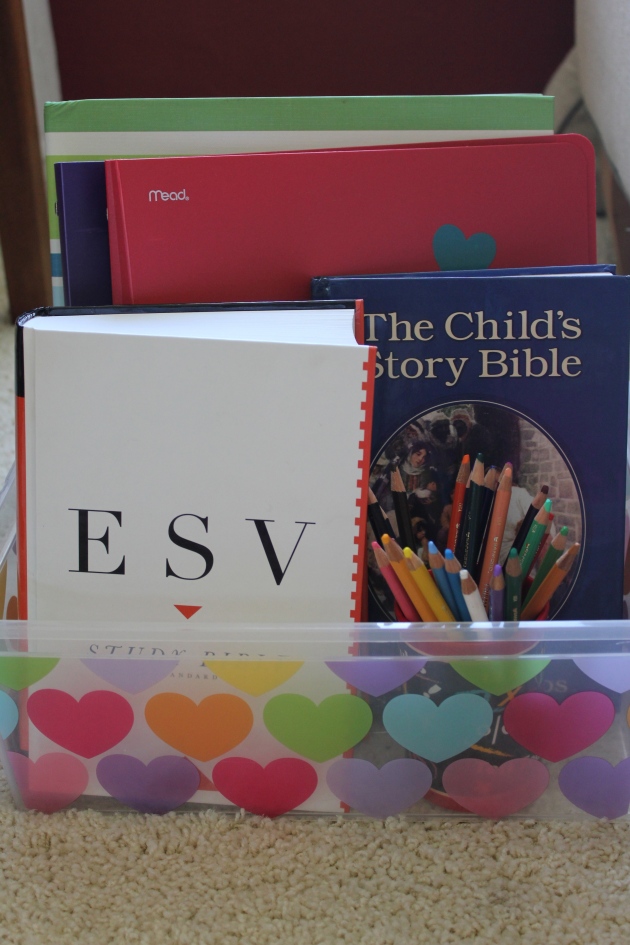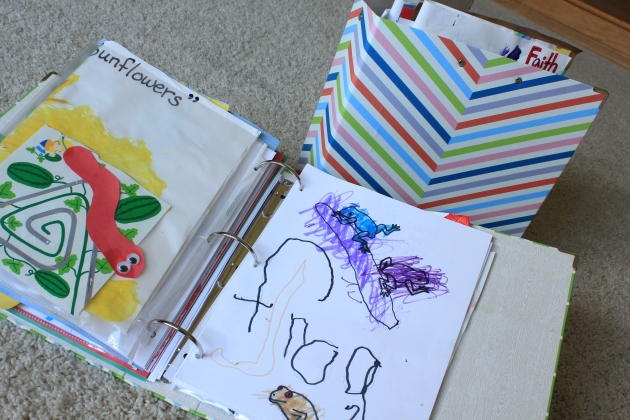2013-2014
We are excited that school is about to start in just a few short weeks! We may not be following these September plans very closely since we will be adjusting to life with a new baby, but I typed them up anyway and hopefully they will be helpful to you. Thank you for keeping us in your prayers, and I will be praying that your heart is stirring with expectation of wonderful things to come this school year.
I invite you to join our Jesus’ Precious Little Lambs school by following along with our lesson plans at home! You are welcome to homeschool with us! Please take a look at Welcome Back to School & Fabulous Fours and Fives for a basic explanation of each area of study that you see here in this monthly lesson plan (bold blue headings), as well as a description of the beauty of Charlotte Mason education methods. To preview our monthly themes planned for the year, also see our 2013 masterplan. If you would like to call your school Little Lambs as well, see my post Founding Message of Jesus’ Precious Little Lambs, a sweet Bible lesson I presented during one of our very first circle times that you might want to use with your kids too!
Bible Theme: I am a Child of God (special, one of a kind, precious in God’s sight)
Preschool Fun Theme: All About Me (name, family, favorite things, gifts and talents, accomplishments, special memories)
Mother Study:
Before teaching your children, enrich yourself on your inheritance as a child of God with Charles Spurgeon’s sermon: The Sons of God.
Special Dates:
Welcome baby! Noah and Faith are having a new baby brother or sister mid-September.
Bible Stories:
Week 1 Genesis 1-2
The Child’s Story Bible pages 1-6
Week 2 Genesis 3-4
The Child’s Story Bible pages 7-11
Week 3 Genesis 5-8 & 10-11
The Child’s Story Bible pages 12-20
Week 4 Genesis 13, 15, 16, 18, 19, 21, 22
The Child’s Story Bible pages 21-27
Memory Verse:
Review last years verse: “I will praise Thee; for I am fearfully and wonderfully made. ” Psalms 139:14
Learn new verse: “Before I formed thee in the belly I knew thee; and before thou camest forth out of the womb I sanctified thee, and I ordained thee a prophet unto the nations. ” Jeremiah 1:5
Classical Art Study:
Hymn:
All Creatures of Our God and King
Song:
Poetry for memorization:
(from The Christian Mother Goose Big Book)
Handwriting:
The children will practice printing:
“(Child’s Name) is a child of God”
and various words from the reading lessons below.
Reading:
Materials: printed poem, word cards for each of the following words, loose letters
.
Rain
“The rain is falling all around
It falls on tree and field”…….
.
Reading Lessons:
1. Write one word from the poem on the board
2. Discuss the word
3. Study it closely, then erase
4. Find the word card from a small pile of cards, then hide the card
5. Spell the word with loose letters (from memory if possible)
6. Find the word in the printed poem
7. Repeat steps 1-6 with each word
8. Do a review of all the words listed up on the board
Word Building Lessons (spelling):
Using loose letters, build words that rhyme with each of the words in the 1st two lines of the poem (ex: rain–Cain, stain, plain, train, gain).
(Lessons 1-4 in Delightful Reading by Simply Charlotte Mason)History Books:
Literature:
Math:
(Activities are from the book Developing Number Concepts by Kathy Richardson)
After completing each of the following lessons, and the children feel comfortable with them, make the materials available during independent work time for the children to practice the activities on their own.
Week 1 Counting Stories (p. 30)
Materials: Counters and Storyboards or blank paper. Lesson: Tell number stories and have the children act them out using some counters as objects in the stories. Children place the counters on a storyboard that represents the setting for the story. Pass out storyboards–paper with a simple picture of a two lane road for example. Say, “Four trucks are driving down the road. Two cars pass them. Count the trucks and cars.” Children place counters on the storyboard and add them up. Extensions: Have children make up their own counting stories. Write the numerals on a small chalkboard as you say them so the children can learn to associate numerals with the amounts they represent (or don’t say the number as you write it if children are familiar with numerals). Or have children write their own numerals (placing counters right on top of the chalkboard).
Week 2 Creations (p. 33)
Materials: Unifix cubes, creation cards. Lesson: Create a model out of unifix cubes (resembling a simple animal for example), or use the provided creation cards in the book. Have children build a matching creation exactly as shown by the model or creation card, and without laying it on top of the model or card. Extension: Have children record the number of cubes they used to build each creation (writing or numeral card).
Week 3 Rhythmic Patterns (p. 90 & 95)
Materials: Unifx cubes. Lesson: Have children copy a rhythmic pattern you make up like ‘Nod, nod, clap; nod, nod, clap…..’. Labeling the parts of the rhythmic pattern aloud using letters can be helpful (A, A, B; A, A, B……) Have the children make the ‘Nod, nod, clap’ pattern with unifix cubes. Say the cube pattern the children chose with both colors (green, green, yellow; green, green, yellow……) and letters (A, A, B; A, A, B……). Extension: Make sure children are also exposed to other patterns such as ABC, AABB, ABB, etc.
Week 4 Is it More or Less? (p. 146)
Materials: Unifix cubes. Lesson: Have children build several trains of specified lengths (all under ten). Say, “Show me a train that has more than six. Show me a train that has less than six.” State the relationship together: “Four is less than six, six is more than four.” Repeat with trains of various lengths. Extension: Decide how many more or how many less one train has than the other. “What can we do to the red train to make it just as long as the blue train?” is easier than “How many more cubes does the red train have than the blue train?” Choose the wording your children are ready for.
Fun Group Projects:
Read this poem and then make footprint and handprint art.
.
.
.
.
.
.
.
.
.
.
.
Make an “All About Me” book. Or “My Life” or “I am a Child of God” or “God Knows All About Me” or “God Loves Everything About Me”. Include narrations with photos of: me as a baby, me growing up, what I look like now, my fingerprints, my footprints, my family, my school, my friends, my favorite _________, my house, my room, my neighborhood, things I am good at, my scripture promise, etc. Could be child narrated or written together in simple language. Use the book as a reader for your child.
Paint or Draw Self Portraits
Make a fun inexpensive dollhouse that resembles your own house and create dolls that represent each of your family members.
Or make a playhouse out of a cardboard appliance box (you can get them for free at an appliance store).
Or make paper bag houses. You can review shapes if you supply lots of different shapes to glue on the houses. Also learn your address (print it on the house).
Measure (with measuring tape and/or stacking and counting unifix cubes), weigh, and compare body measurements and sizes.
Trace bodies on sidewalk with sidewalk chalk. Add clothes and features using sidewalk chalk or homemade sidewalk paint.
Nature Study:
Go on a Tarantula Trek on Mount Diablo. And go play outdoors before the chilly weather comes!
All good things are inspired by God! We share freely here to be a blessing to you with all that He has given us. Thank you for sharing what you have been given with others too. “Freely you have received, freely give.” Matthew 10:8
